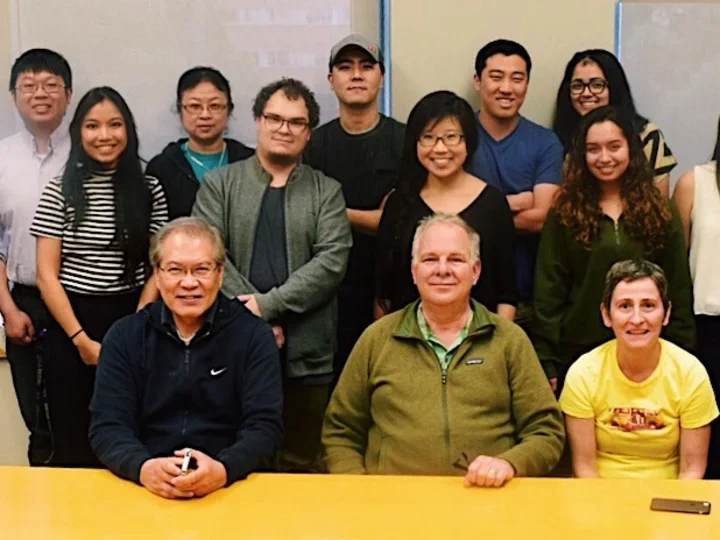Beigneux Research Lab
About Our Research
Drs. Anne Beigneux, Stephen Young and Loren Fong at UCLA discovered that GPIHBP1 is crucial for the lipolytic processing of tryglyceride-rich lipoproteins. We went on to show that GPIHBP1 is a cell surface protein of microvascular endothelial cells and that its function is to bind lipoprotein lipase (LPL) in the subendothelial spaces and transport LPL to its site of action in the capillary lumen.
Dr. Beigneux's laboratory is focused on defining the structure-function relationships of GPIHBP1 and LPL. GPIHBP1 has two key domains: an amino-terminal acidic domain enriched in aspartates and glutamates and a LU domain containing 10 cysteines. All 10 of these cysteines are disulfide-bonded, causing the protein to fold into a characteristic three-fingered motif. Using site-directed mutagenesis and alanine-scanning mutagenesis, we showed that the LU domain is required for GPIHBP1 to bind and transport LPL. We identified 12 residues within this domain (aside from the cysteines) that are important for LPL binding, nine of which were clustered in finger 2 of GPIHBP1's three-fingered motif.
We went on to show that most of the mutations that abolish GPIHBP1's ability to bind LPL, including mutants identified in patients with familial chylomicronemia, lead to the formation of disulfide-linked GPIHBP1 dimers and multimers that have little or no capacity to bind to LPL. One mutant, GPIHBP1-W109S, had distinctive properties; it lacked the ability to bind LPL but had a reduced propensity to form dimers and multimers, suggesting that W109 has a direct role in binding LPL (i.e., participates in the binding interface).
Recently, in collaboration with Dr. Nakajima, we identified a new cause for hypertriglyceridemia in humans-hypertriglyceridemia due to GPIHBP1 autoantibodies that abolish GPIHBP1-LPL interactions. We also found that certain LPL missense mutations associated with chylomicronemia in humans prevent LPL from binding to GPIHBP1 and do so without affecting LPL's catalytic activity. These mutations involved residues in the carboxyl-terminus of LPL.
Most recently, we found that, contrary to the dogma, LPL monomers are active. We were energized to find that the crystal structure of the GPIHBP1-LPL complex defined by Drs. Birrane and Meiyappan supported our findings on the structure-function relationships of GPIHB1 and LPL.
Principal Investigator
Anne Beigneux
abeigneux@mednet.ucla.edu
Collaborators
Loren Fong
lfong@mednet.ucla.edu
Stephen G. Young
sgyoung@mednet.ucla.edu
Recently Published
- The lipoprotein lipase that is shuttled into capillaries by GPIHBP1 enters the glycocalyx where it mediates lipoprotein processing. J Clin Invest.120(40):e2313825120. doi: 10.1073/pnas.2313825120. PMC37871217. | 2023
- Hypertriglyceridemia in Apoa5–/– mice results from reduced amounts of lipoprotein lipase in the capillary lumen. Proc Natl Acad Sci U S A.132(5):e172600. doi: 10.1172/JCI172600. | 2023
